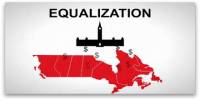Contingent work, or contract work, is an employment relationship with limited job security, payment on a piece work basis, typically part-time (typically with variable hours) that is considered non-permanent. Companies are continuously trying to maximize efficiencies and cut costs in order to increase profitability. Although there is less job security, freelancers often report incomes higher than their former traditional jobs. When you’re a recruiter, you come across clients who want all types of workers. Contingent employment means a worker’s position with a company is temporary. Instead of an employee, a client might want to hire a contingent worker. The individual is not an employee of the business, and therefore isn’t hired on a permanent basis. Typically, contingent workers are hired to complete a project.
Contingent workers who are independent contractors are responsible for paying their own taxes because they are self-employed. Contingent workers are also often called consultants, freelancers, independent contractors, independent professionals, temporary contract workers, or temps. There are a variety of reasons why a company would prefer contingent workers. They can work on-site or remotely. They are highly skilled experts in their fields. They are not salaried. They do not receive benefits. Since contingent workers are not permanent, the workforce can rise and fall according to the workload. They are responsible for their own taxes as they work for themselves—not the company. In addition, employers do not have to pay payroll taxes, unemployment taxes or benefits for these workers, which can save the business money.
A contingent workforce is a labor pool whose members are hired by an organization on an on-demand basis. According to the US Bureau of Labor Statistics (BLS), the nontraditional workforce includes “multiple job holders, contingent and part-time workers, and people in alternative work arrangements”. These workers are hired to complete specified tasks under a statement of work (SOW) provision. These workers currently represent a substantial portion of the US workforce, and “nearly four out of five employers, in establishments of all sizes and industries, use some form of nontraditional staffing”. Once the project is over, they leave, though they may be called back when another project arises. “People in alternative work arrangements” includes independent contractors, employees of contract companies, workers who are on call, and temporary workers. Contingent employment is considered the best freelance platform as you can see huge growth in terms of monetary benefits as well as career growth. Sometimes, contingent work can turn into permanent employment, like if your client wants to hire a contract worker full time.
















